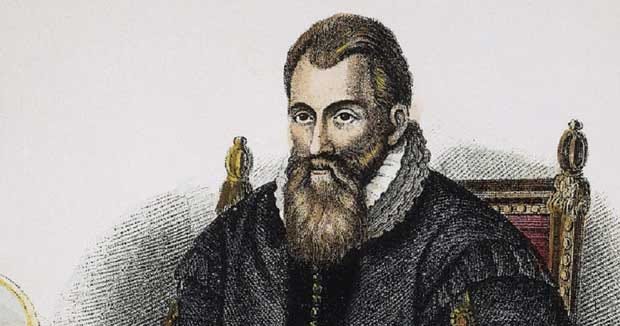John’s Napier’s Legacy Lives On!

John’s Napier’s Legacy Lives On!
I work in the shadow of John Napier’s Tower. Each weekday I walk past the place that he created one of the greatest scientific achievements … the discovery of logarithms.
If he were alive today, I feel he would be proud of the work of the university that took his name. His work now protects those online from the prying eyes of those who wish to do harm.
John’s legacy lives on in the core of modern-day cryptography, but this time we use discrete logarithms, and where we only use integer values. We also constrain to a finite field of between 0 and a prime number (p) minus 1. The addition of the (mod p) operation allows us to apply our normal maths principles, but constrain the range of numbers produced (a finite field). And so:
a x b (mod p) = a (mod p) x b (mod p)
and where (mod p) is the remainder to a division by p. Within discrete logarithms, we have a value of g, and raise it to the power of x, and then take (mod p):
Y = g^a (mod p)
If p is large, then we do not have the computing power to work out the value of x, even though we know Y, g and p. I can see John smiling as he reviews his contribution, and then would delight at the Diffie-Hellman method:
Alice generates a, Bob generates b. Alice calculates A=g^a (mod p). Bob calculates B=g^b (mod p). Alice sends A to Bob, and Bob sends B to Alice. They can then calculate the same shared secret:
Share = B^a (mod p) and Share = A^b (mod p)
I can hear him chuckle at the beauty and simplicity of this method, and how his logarithms are protecting us against hackers and government spies. For him logarithms made complex calculations quicker, but now it is logarithms that make things easy for Bob and Alice, but extremely difficult for Eve.
I think he would be most proud of crypto pairing, and how we can now create a function (e) where:
e(g^a, g^b) = e(g,g^{ab})
e(g^a,g^b) = e(g^b,g^a)
e(g,g^{ab}) = e(a g, b g)
package edu.jhu.isi.CLSign.helloworld2; import java.util.stream.Collectors; import edu.jhu.isi.CLSign.keygen.PublicKey…asecuritysite.com
In Edinburgh, John seems to be a fairly forgotten son, but his legacy lives on in the heart of on-line security. Along with James Clerk Maxwell, I thank him every day for his help in building our research.
In research, we stand on the shoulders of giants.